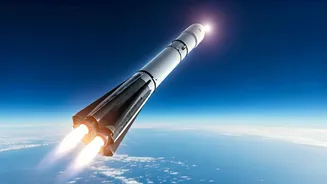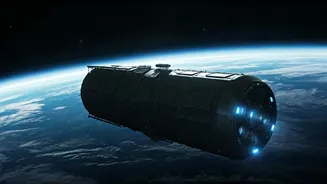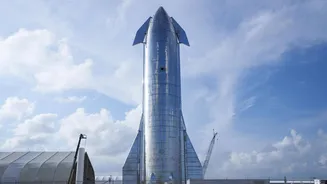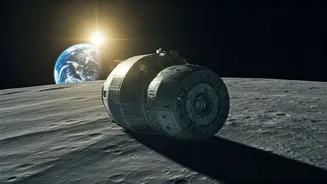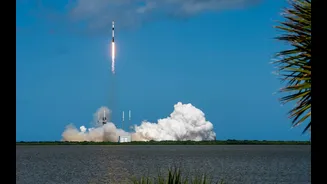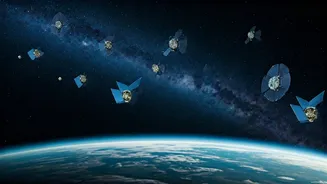Blue Moon: A Vision
Blue Origin's Blue Moon lander is a serious contender in the quest to return humans to the moon. Designed by Jeff Bezos's space company, the Blue Moon has
been developed to be a lunar lander for cargo and crew. Its design incorporates a robust architecture, focusing on reliability and reusability. This approach aligns with the long-term goals of establishing a sustainable human presence on the moon. The lander is expected to offer capabilities that differ from other landers, with the potential to carry various payloads and facilitate a range of missions, from scientific research to resource utilization.
Design and Capabilities
The design of the Blue Moon is rooted in its objective of being a versatile and dependable lunar lander. The lander has a large cargo capacity, allowing it to transport significant amounts of equipment, scientific instruments, and even crew to the lunar surface. Its propulsion systems are built to ensure precise landings and enable operations across various lunar terrains. Furthermore, the Blue Moon's architecture integrates features that permit reusability, reducing costs and enhancing the sustainability of lunar missions. The emphasis on reusability and payload capacity distinguishes Blue Moon from other potential landers, increasing its long-term viability in lunar exploration plans.
Starship: The Rival
SpaceX's Starship, designed by Elon Musk, is another major player in the race to the moon. Starship's ambition is grand, with goals to become fully reusable and able to transport large quantities of cargo and crew. Its size and launch capabilities are designed for deep-space exploration, including lunar missions and potentially even Mars. Starship's development is focused on innovation and rapid iteration, which has allowed for several prototypes and advancements. The key element is its aspiration for complete reusability. It is intended to significantly reduce the cost of space travel. However, Starship's complexity and the development challenges it faces put it against the Blue Moon in terms of a reliable timeline for missions.
Comparing Approaches
Blue Moon and Starship represent different approaches to lunar travel. Blue Moon's design focuses on reliability and practicality, aiming to be a dependable solution for the immediate needs of lunar missions. This approach emphasizes tried-and-true technology with a strong commitment to sustainable exploration. Starship, on the other hand, is a more ambitious project. It incorporates cutting-edge technology and is designed for extensive space operations, including deep-space travel. The contrast between these two approaches reflects differences in their design philosophies and the mission objectives they support. However, both aim to make a substantial contribution to human presence on the moon.
Impact on Missions
The introduction of the Blue Moon has significant implications for future lunar missions. Its capabilities can enable a wider range of activities on the moon, including sustained scientific research, the extraction of resources, and the establishment of habitats. As a viable option for transporting cargo and crew, the Blue Moon could accelerate the pace of lunar exploration and help create a more comprehensive program of human activity on the moon. Moreover, the existence of multiple landers such as Blue Moon and Starship encourages competition. This fuels innovation and drives down the costs of space travel, leading to more regular and affordable lunar missions.
Future of Lunar
The future of lunar missions is set to be shaped by the success of landers like Blue Moon. As the technology continues to develop and improve, we can expect to see more sophisticated lunar missions. These missions would include extended stays on the moon, advanced scientific research, and the exploration of resources for continued expansion. The participation of private companies, like Blue Origin, in collaboration with government space agencies, will play a crucial role. This collaborative effort could combine the expertise, resources, and innovation that would allow humankind to establish a permanent presence on the moon.


